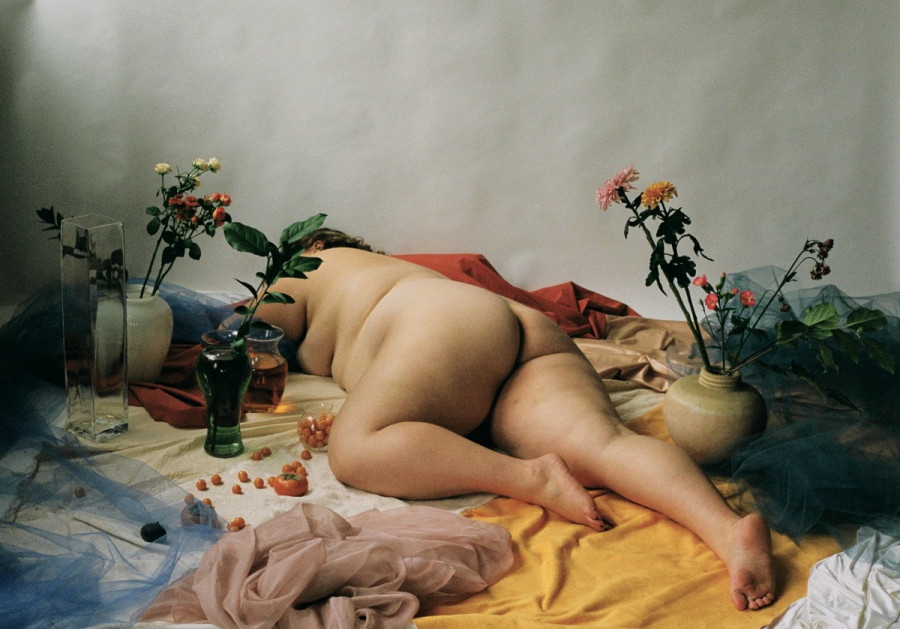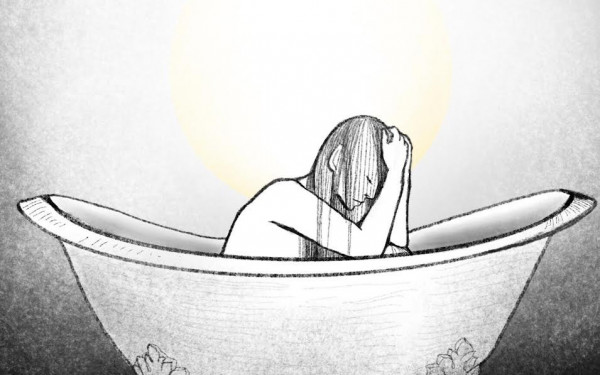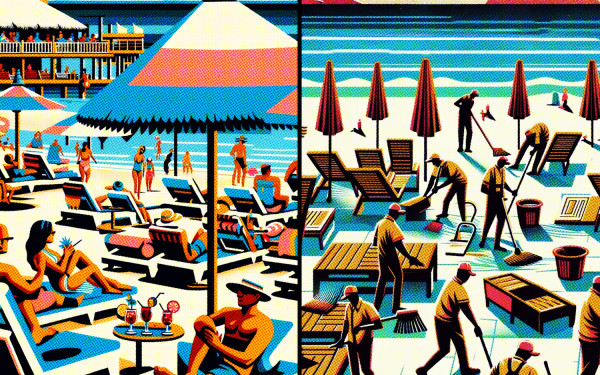Peep the Programming for the 2019 Edition of Art Matters
The Annual Student Run Festival is Back Again to Celebrate Art
Art Matters is aptly named.
Why? The annual, student-run festival is a labour of love, all relating back to the idea that art matters quite a lot. It’s been run by and for undergraduates each March since 2000. This year will have 10 exhibitions, featuring work from over 80 undergraduates (chosen from a pool of over 300). Art Matters is built on the idea that art should be inclusive and accessible to all.
Interface // Nomad Nation // 129 Van Horne Ave.
Serena Desaulniers, a communications student minoring in art history, got the idea for Interface based on a research paper she wrote for class on crafts. “I wrote about the interrelation of fibre arts, specifically crafts, but I tied it a little more closely to crafts and software development and their forms of production,” said Desaulniers.
“It’s an exhibition that explores the connection of fibre arts and intermedia and digital artworks,” she continued.
She wanted to keep developing her idea on paper, to show how the concepts were connected, but she had run out of space. So she continued to work on her idea through the curation process.
“Most of the works, with the exception of two, are digitally-oriented. All of the works to varying degrees reliant on the people’s interaction and movement around them,” explained Desaulniers, adding there’s a lot of motion sensors employed in the artworks chosen.
One example is the dance performance set to occur on Interface’s opening night called Thought Distortion , by Alisha Billias. Desaulniers explained the artist will be using motion sensors to track the movements, then inputting them into another machine to create a whole new sound and form of music, which will happen almost concurrently.
Part of Desaulniers’ intention as a curator was to illuminate some of the differences in how artforms are perceived and consumed. She highlights how oftentimes art made by hand or with natural materials tends to have a higher value than art created through a digital means of production.
“I think about what is considered to be high art, or valued. Most craft and digital media tends to carry less value in comparison to fine art. These works consider different senses than more visual senses, they consider tactile experiences and more embodied experiences, so I hope people take away different [ways] of approaching art,” said Desaulniers.
Porpos // Espace POP // 5587 Park Ave.Porpos , curated by Chloë Lalonde, centres around the theme of sustainability. The curator and arts editor at The Concordian chose pieces she deemed useful in both a utilitarian and conceptual sense.
Sometimes the creation of art or the art world is criticized for being wasteful, frivolous, or elitist. Porpos challenges that notion.
“As an art educator and anthropology student, I’m really concerned with leftover materials. I see my students create work that will likely be thrown away, but something that evades that is creating work that has a purpose.”
Porpos questions the ideas of what is useful or not. It also examines utility in artwork through a multisensory experience “tied to the land it was created on.” Porpos is a play on words relating to the themes of the exhibition, a conscious choice. Lalonde intended for it to be pronounced in French, since it’s the old French word for purpose. This references some of the artworks she chose that have themes of French Canadian nationalism.
She thinks it also, “[Adds] to that extra little quirky vibe that the show will give off through word play.”
“Porpos, por-puss? Porpoise? Language, interpretations, pronunciation [are] deliberate, I acknowledge that not all people will pronounce Porpos the way I intend it to be, but that’s part of it.”
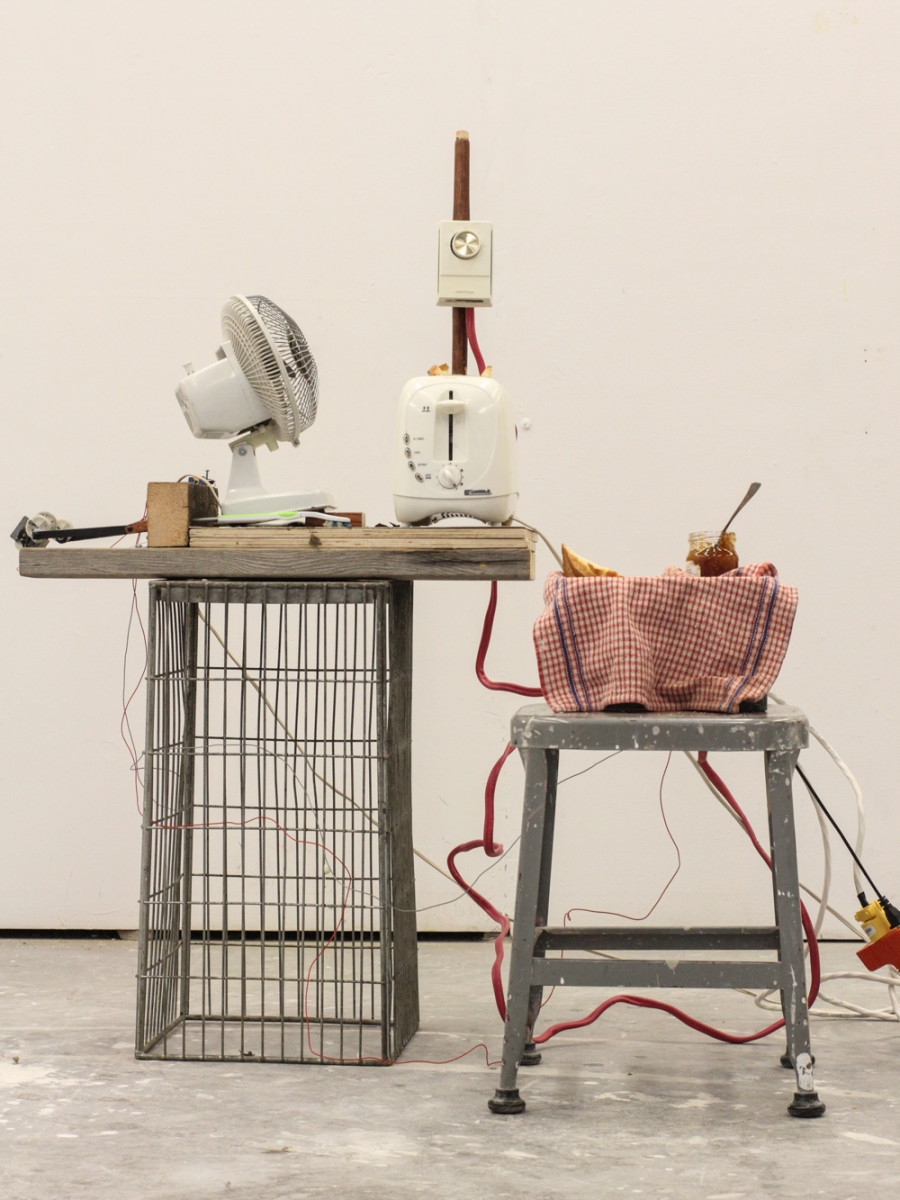
She aims to promote the idea of “arte-utile,” which Lalonde explained as art with a purpose, one that steps away from academic pedagogy. The idea of art with a purpose could be considered especially important in today’s day and age. Lalonde hopes that Porpos will challenge artists and viewers to reflect on how they, “Experience and embody art, what is lost in the creation process, and suggest ways to save these losses from landfills.”
The Link would like to mention that LaLonde is an editor at The Concordian.
Digital Dreams / I’ll Dream About This Someday // Theatre Rialto // 5723 Park Ave.Félixe Bouvry, a studio arts student, curated Digital Dreams based around the themes of memory and its subjective, ephemeral nature. As the name of the exhibition reveals, the works are all digitally based videos, with exception for one collage.
She curated another exhibit last year, and her previous experience drove her to explore the nature of memory through artwork.
Digital Dreams will feature seven works by eight artists. “It’s about how artists can portray directions through digital expression,” said Bouvry. She hopes that viewers will walk away from Digital Dreams questioning the subjective nature of memory itself.
“[Digital Dreams is] about the glitches in memory. All the works I chose relate strongly to memory, how you see what you experience and [how] you translate it into an art piece. Most of the work is going to be installation-based so you’re going to be able to sit down and chill and look at the work many times,” said Bouvry.
She strives to make the viewers comfortable throughout the process. “I think if you have this really positive experience, I think that after that if you keep that with you, [the memory of it] gets stronger than the art piece itself. [Digital Dreams is] all work that will live in the space but also lives in the memory of the viewer.”
She pointed out that most people don’t really talk about how they experience an artwork in the aftermath of seeing it, noting that there are many pieces she may remember in a way that wasn’t intended by the artist.
“Sometimes the memory of an art piece is really really important and we don’t talk a lot about this, because it’s like this distortion that is not expected by the artist but it’s something that everybody deals with,” said Bouvry.
MALAISE // GHAM+DAFE // 3425 Ste. Catherine St. E.Olivia Deresti-Robinson loves strange artwork, the combination of beauty meeting a feeling of unease or bizzarity. She has curated the show MALAISE. The art history and women’s studies student explained that she loves to explore how the two topics intersect. The jump off-point of MALAISE, the exhibition centres around the themes of gender, unease, and the bizarre.
“Feminist art historians often have a lot to critique about the traditional art canon, and art can also be used as a political mechanism, sparking discussion around issues of gender, race, and sexuality,” Deresti-Robinson said.
She chose eight artists whose work she felt, “Addressed gender or social issues, or had a somewhat quirky or unusual aesthetic.” MALAISE will feature a wide variety of pieces. There will be sculptures, a quilt, installations, a silent film, paintings, a performance, photography, and a ceramic wall piece.
“The intention is really to invoke a sense of unease that forces viewers to think about these issues that many turn a blind eye to.” She said that many of the artworks explore the female body and the issues surrounding it. Others address power dynamics and the intricacies of gender expression.
“Through the exploration of gender, the bizarre, and feelings of unease, MALAISE forces viewers to confront these injustices, provoking thought and discussion women and marginalized people face in our society,” Deresti-Robinson explained.
Look what you made me do // Espace 8 // 4040 St. Laurent Blvd.Memes are ubiquitous to web culture, explained Louise Campion, who’s curating Look what you made me do alongside Nina Molto. Separately, the image and text are meaningless; the impact comes from the juxtaposition of both.
We see them everywhere, said Campion. Memes are obviously found online, but we see them printed out too—like in the Hall Building, for example. They are a tool for communication. But how does that affect a generation of art students?
“The theme of the show is the duality between text and visual,” explained Campion. The melding of text and visual elements is not exclusive to memes though, and Look what you made me do explores the many ways visual art and text coexist.
Poetry is a disappearing medium, said Molto. While putting together the show, she was interested in exploring its role in popular culture. A broad range of mediums are exhibited. Between painting, photography, installation, sculpture, video, sound installation, and printed text, the curators said they wanted a multiplicity of mediums to tackle the topic.
Some pieces present a duality between text and art, where words accompany a piece. For other artists, it’s part of an aesthetic configuration, where words are incorporated in a piece.
In choosing their show’s title, the first-time curators were looking for something evocative of internet culture. Borrowed from Taylor Swift’s lyrics, Look what you made me do channels a sense of irony that permeates the show, but also introduces the theme of guilt explored in the pieces exhibited.
Communication has been transformed by the internet and instant messaging, and so Molto highlighted that will also be explored.
“We also have one piece that is only sound,” said Molto. “It was good to have this piece because I think of it as a dialogue within the show. This piece doesn’t have any visual but it’s still presenting an imagery in our heads that comes up. It’s an installation, it’s going to be in almost complete darkness.”
The nature of the texts vary. While some artists created poetry, Campion explained others attempt to bring together the text and work.
“It’s all about how you can make links between words and imaginary, or direct images that you have in front of you, that you can have in your mind when you’re reading it,” said Campion.
The Suffocating, Impractical Desire to Name. // Loyola Chapel // 7141 Sherbrooke St. W.“I think about what is considered to be high art, or valued. Most craft and digital media tends to carry less value in comparison to fine art. These works consider different senses than more visual senses, they consider tactile experiences and more embodied experiences, so I hope people take away different [ways] of approaching art.” — Serena Desaulniers
On March 15, art enthusiasts will experience a unique night of performance art at the Loyola Chapel. The event-based vernissage will unfold between 6 p.m. and 10 p.m., where artists will come together to explore the limits of language through their practice.
“It’s about art that interacts with text,” explained curator Emily Sirota, “and particularly art that uses text and language in ways that don’t necessarily clarify meaning.”
The exhibit is also partnered with a weekly radio show on Radio Atelier, CIBL 101,5.
There are nine works in total, four of which are performances. Among performing poets and art installations, electroacoustic sound artist Rouzbeh Shadpey will be presenting The Voice, Suspended Between Us.
“He’s written a short poem and then he is feeding it to different speakers, so the poem takes on different voices,” explained Sirota. “At one point, it’s translated into Farsi, and at another point, there’s this robotic voice. It’s this massive text, but the text isn’t clarifying. It’s actually layering on top of other iterations of this poem.”
Some art can be exhibited again, but the ASMR guided meditation will be a unique and ephemeral experience for one night only. “They’re taking over a little room off the main retreat of the chapel,” said Sirota. “That’s going to be a little corner filled with blankets and pillows.”
Judith Zaoui choreographed lesconsonnessontoranges, which dancers will perform on March 15. With this piece, Sirota explained Zaoui will be discussing the,“embodiment of not being able to speak or explain yourself.”
The performers will be creating a soundscape through sneezing, coughing and spitting on each other, since they “gesture towards speech but usually fail to actually become it.”
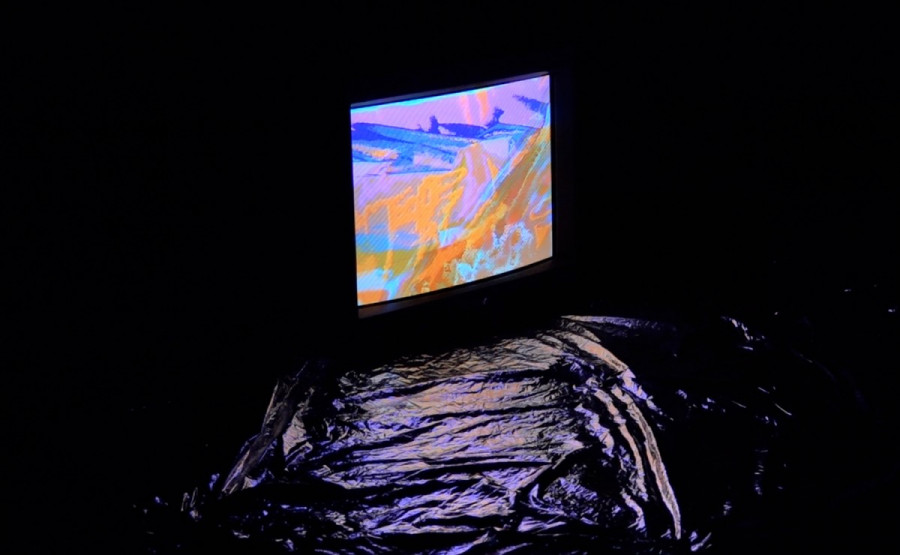
Sirota explained often there’s the assumption that text dominates when it’s paired with visual or performance art, that language encapsulates meaning, while the visual holds feelings.
“I just wanted to disrupt the idea that it’s so easy to explain yourself, and instead invite the audience,” said Sirota. “Welcome in the weirdness of the incompleteness of language without rejecting it wholesale.”
Between March 11 and 22, the Visual Arts Visuels Gallery will be the home of Sites of Embodied Silence. The gallery itself hosts rotating shows exhibiting Concordia undergraduate students’ art.
Curator Joyce Joumaa crafted the show to explore the ramifications of silence. She explained that for the sake of being politically correct, people tend to use silence as a response, giving the example of the #MeToo movement.
“It’s about the different forms onto which silence can be shaped,” said Joumaa about her show. “I’m also trying to explore how silence can be embodiment and how it can work as a way of resistance, or not.”
Because the VAV Gallery is quite big, Joumaa was able to include many mediums, including photography, video installation, paintings, and a 3D installation. There will also be a seven-minute performance during the vernissage, on March 14, from 6 p.m. to 9 p.m.
In Search of Delicious // Studio XX // 4001 Berri St. #201Petra Höller, completing their studies in art history and studio arts, curated _In Search of Delicious _ for the festival not only to decipher the meaning of the word “delicious,” but also to address notions like “pleasure, satisfaction, well-being and care.” They did so with the aim of showing the complexity of finding a universal definition for any given word.
As an independent curator of experimental music and performance art events for three years, Höller has also volunteered and worked at community art councils and galleries before. Their personal artwork comprises of paintings, drawings, weavings, and zines.
“I am interested in how language can be played with to better express and shape one’s experiences, as well as how new realities can be imagined,” they said.
The themes and concepts for In Search of Delicious was inspired by Natalie Babbitt’s 1969 novel The Search for Delicious. In it the main character’s quest is to survey the population in hopes of finding a definition of “delicious” agreed upon by all, later concluded as impossible.
“This task illustrates the failure of language to represent the myriad realities that it is imposed upon. Holding on to definitions does not allow for a multiplicity of ways of being and experiences,” Höller explained.
Höller hopes to evoke the feelings of “vulnerability, play and curiosity” so visitors can reflect on their own experiences and challenge the limitations of language.
This multimedia exhibition including sculpture, fibres, multimedia collage, video, photography and painting will showcase the works of Adia Parris, Alejandra Zamudio Diaz, Clare Grehan, Erica Hart, Lil Hel, Sasha Pozzolo and S. Pat.
During the curation process, Höller said they sought to, “Find works that could be in dialogue with each other within the general thematic framework.”

